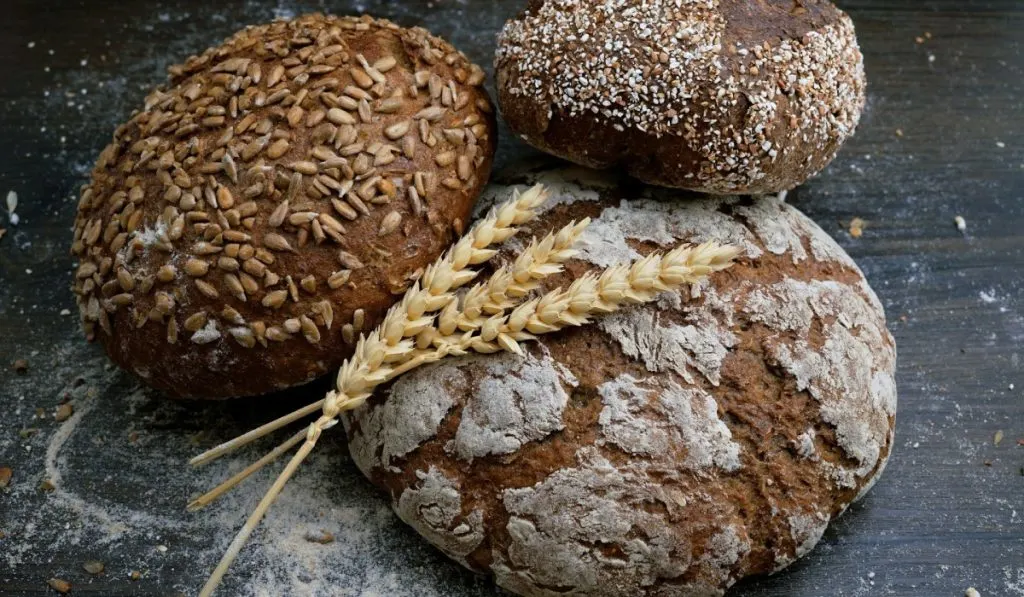
Sinking your teeth into a slice of whole grain sourdough bread, you immediately taste the difference—rich, hearty, and deeply satisfying. Yet, not all breads are created equal, and the journey to perfecting whole grain sourdough can be riddled with challenges.
From the complex fermentation process to achieving the perfect crumb, many enthusiasts feel overwhelmed. However, the rewards of mastering this ancient art are unparalleled, offering not just a delicious treat but a beacon of health benefits.
TL;DR: Key Takeaways
- Health Benefits: Whole grain sourdough offers a myriad of health advantages, including improved digestion.
- Baking Techniques: Mastering the art of sourdough with whole grains can elevate your baking game.
- Flavor and Texture: Achieving the perfect balance of flavor and texture is possible with the right techniques.
- Personal Insights: Insights from seasoned bakers can guide newcomers through common pitfalls.
- Nutritional Info: Emphasize the superior nutritional profile of whole grain sourdough compared to regular breads.
Embracing the Complexity: What Makes Whole Grain Sourdough Special?
Whole grain sourdough bread stands out in the bakery aisle not just for its robust flavor and hearty texture but for the complex nutritional profile it offers. Unlike its refined counterparts, whole grain sourdough retains all parts of the grain kernel—bran, germ, and endosperm—which are rich in fibers, vitamins, and minerals. The fermentation process further enhances its health benefits, making nutrients more available and the bread easier to digest.
The Secret to Perfect Whole Grain Sourdough
Baking whole grain sourdough is as much an art as it is a science. Here are some tips to get you started:
- Grain Selection: The choice of grain is the cornerstone of flavorful sourdough bread. Whole grains come in many varieties, each contributing its unique flavor and texture. When selecting grains, opt for high-quality, organic options like whole wheat, rye, or spelt, which not only enhance the bread’s flavor but also boost its nutritional value. Organic grains are preferred because they are grown without synthetic additives, preserving the grain’s natural qualities and ensuring that the flavor is as rich and natural as possible.
- Fermentation: Slow fermentation is key to developing the bread’s flavor and making it more digestible. By allowing the dough to ferment over a longer period, typically 12 to 24 hours, you encourage the growth of natural yeasts and beneficial bacteria. This not only builds a complex flavor profile but also breaks down the phytates in grains, which improves nutrient absorption and digestibility.
- Hydration: Hydration plays a critical role in the texture of your sourdough. Whole grains absorb more water than refined flours, so adjustments in hydration levels are crucial. A wetter dough, generally around 75% to 85% hydration, is ideal for whole grain bread as it supports enzyme activity and yeast growth, leading to a lighter crumb and a more open texture. It’s important to add water gradually and assess the dough’s consistency as you go, as different grain mixes can vary in their absorption rates.
Unlocking the Flavor: Tips from the Experts
Achieving the perfect flavor and texture in whole grain sourdough requires patience and precision. Here’s what experts suggest:
- Temperature Control: Maintaining a consistent temperature during fermentation is crucial for developing the bread’s flavor and structure. The ideal fermentation temperature for sourdough is typically between 75°F and 80°F (24°C to 27°C). In cooler environments, consider using a proofing box or a warm spot in your kitchen to maintain a stable temperature. Consistent warmth helps the yeast perform optimally, contributing to a better rise and a more flavorful loaf.
- Steam Baking: Introducing steam during the initial phase of baking helps in forming a golden, crispy crust and a soft, airy interior. The steam allows the surface of the dough to remain flexible longer during baking, enabling the bread to expand fully before the crust hardens.
- Sourdough Starter Health: The health of your sourdough starter is vital to the success of your bread. A well-maintained starter is active and bubbly, with a pleasant, slightly tangy aroma. Feed it regularly with equal parts flour and water to keep it vigorous. For whole grain breads, incorporating some of the same whole grains used in your dough into your starter can enhance both its flavor and activity.
Health Benefits: Whole Grain Sourdough as a Nutritional Powerhouse
The health benefits of whole grain sourdough bread extend far beyond its basic nutritional content. Incorporating whole grain sourdough into your diet introduces a wholesome element that’s rich in dietary fibers, essential minerals, and antioxidants. Here’s a deeper look into how this bread can significantly impact your health:
Dietary Fiber: Whole grain sourdough is a fantastic source of dietary fiber, which is crucial for digestive health. Fiber helps regulate the digestive system, aids in maintaining a healthy gut microbiome, and can prevent issues such as constipation. Regular consumption of high-fiber foods like whole grain sourdough also contributes to a feeling of fullness, which can help with weight management by reducing the overall calorie intake.
Glycemic Index: Whole grain sourdough has a lower glycemic index compared to breads made from refined flours. This means it causes a slower increase in blood glucose levels, making it an excellent choice for people managing diabetes. The fermentation process in sourdough also helps to decrease the bread’s phytate content, which improves mineral absorption, benefiting overall blood sugar control.
Heart Health: The whole grains used in sourdough bread are known for their role in improving heart health. Studies have shown that whole grains can reduce the risk of heart disease by lowering cholesterol levels, blood pressure, and inflammation. The fermentation process enhances these effects by breaking down the parts of the grain that are typically less accessible, making the beneficial components more available.
Nutrient-Rich: Whole grain sourdough contains several vital nutrients, including selenium, iron, and magnesium, which are often higher in concentration in sprouted grains used for some types of whole grain sourdoughs. These nutrients are essential for various bodily functions, including immune system support, oxygen transport, and enzyme function.
Personal Insights: Embracing the Sourdough Community and Innovation
As an experienced journalist deeply embedded in the world of artisan bread, I’ve observed the passionate resurgence of sourdough baking and its impact on bakers at all levels. Here are some personal insights based on my experiences:
Community Engagement: One of the most enriching aspects of sourdough baking is the vibrant community that supports it. Joining baking forums and communities, both online and offline, can significantly enhance your baking skills. These platforms offer a treasure trove of shared knowledge, from troubleshooting tips to creative recipe ideas, providing both support and inspiration.
The Joy of Experimentation: Sourdough baking is inherently experimental. Each batch can teach something new, especially when incorporating various whole grains. Don’t hesitate to experiment with grains like spelt, rye, or barley. Each grain not only affects the flavor and texture but also impacts the nutritional profile of your bread. Spelt, for example, offers a slightly sweet and nutty flavor, while rye can give a deep, rich taste and denser texture. Experimentation can lead to the discovery of your perfect blend, uniquely tailored to your taste and health needs.
By embracing the health benefits and community spirit of sourdough baking, enthusiasts can transform a simple loaf of bread into a meaningful, healthful part of their culinary life. This holistic approach not only enriches your diet but also deepens your connection to food and the culture surrounding it.
Conclusion: Why Whole Grain Sourdough Deserves a Spot in Your Oven
Whole grain sourdough isn’t just a bread; it’s a lifestyle choice that champions nutritional benefits and exquisite flavors. Whether you’re a novice baker or a seasoned pro, the journey to perfecting this bread can be deeply rewarding.
FAQs About Whole Grain Sourdough Bread
What are the main health benefits of whole grain sourdough bread?
Whole grain sourdough bread is richer in nutrients and fibers than white bread, aiding in better digestion and reduced disease risk.
How long does it take to make whole grain sourdough bread?
Typically, it can take anywhere from 20 to 30 hours, including preparation of the starter, dough fermentation, and baking.
Can I use regular yeast in whole grain sourdough?
No, sourdough requires a natural starter for fermentation, which imparts unique flavor and texture characteristics.
What is the best way to store whole grain sourdough bread?
To maintain freshness, store it in a bread box or wrap it in a cloth and keep it at room temperature.
Are there any alternatives to wheat for whole grain sourdough?
Yes, grains like spelt, rye, and barley can also be used to create diverse and flavorful sourdough breads.
Join Us and Transform >
Don’t Be an Amateur! Master the Art of Sourdough Bread!




Leave a comment